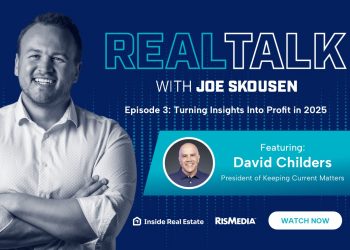There’s been a lot of uncertainty surrounding real estate as U.S. residents seek a reprieve from the COVID-driven market rush. With inventory shortages compounding exorbitantly high home values—creating an ultra-competitive environment for buyers— low mortgage rates have, thus far, been the silver lining.
In fact, this month, rates dropped to their lowest level since mid-February. According to Freddie Mac, the 30-year fixed-rate mortgage averaged 2.96% for the week ending May 6—a decrease from last week’s 2.98% and last year’s 3.26%.
The 15-year fixed-rate mortgage also went down, from 2.30% from last week’s 2.31%—down from 2.73% last year.
“Mortgage rates have remained under 3% for three consecutive weeks,” said Sam Khater, Freddie Mac’s chief economist, in a statement. “Consumer income and spending are picking up, which is leading to an acceleration in economic growth. The combination of low and stable rates, coupled with an improving economy, is good for homebuyers. It’s also good for homeowners who may have missed prior opportunities to refinance and increase their monthly cash flow.”
However, as the economy recovers from pandemic-incurred losses, rates may not stay low for long. Just last week, U.S. Treasury Secretary Janet Yellen, in an interview with the Atlantic, said rates may have to increase in order to keep the U.S. from overheating.
“It may be that interest rates will have to rise somewhat to make sure that our economy doesn’t overheat, even though the additional spending is relatively small relative to the size of the economy,” said Yellen, referencing consumer spending due to President Biden’s latest stimulus bill.
But while Yellen later said she was not “predicting or recommending” rate increases, in the world of real estate, things have been heating up for quite some time—and buyers will certainty tell you they could use a cool down.
According to a recent National Association of Home Builders (NAHB)/Wells Fargo Housing Opportunity Index (HOI), housing affordability weakened slightly in Q1 of 2021. Between the beginning of January and end of March, 63.1% of new- and existing-homes sold were affordable for families earning the U.S. median income of $79,900—this is down from the last quarter of 2020, which had a 63.3% affordability index for a median income of $78,500.
“While economic growth in 2021 will be at the highest growth rate since 1984, and the labor market will continue to improve, higher home prices and an expected rise in interest rates will price some prospective homebuyers from the market,” said NAHB Chief Economist Robert Dietz in a statement. “More housing supply is needed to bring home price growth back to sustainable levels.”
Housing supply and building material costs continue to be a factor in waning affordability, but if mortgage rates rise as well, there could be cause for concern.
“After a surprising gain for housing affordability in 2020 that was driven by historically low interest rates, housing emerged as a bright spot for the overall economy,” said NAHB Chairman Chuck Fowke, in a statement. “However, the first quarter reading of the HOI is an indication that affordability will further decline this year as higher lumber and other material costs and longer construction times will act as headwinds for the market.”
There have been recent glimpses, however, of added traction within the production space, which could level things out even if rates do rise. Additionally, experts have confidently ascertained that a housing market crash is not on the horizon. Despite the COVID pandemic, the real estate markets have proven resilient.
Liz Dominguez is RISMedia’s senior online editor. Email her your real estate news ideas to lizd@rismedia.com.










